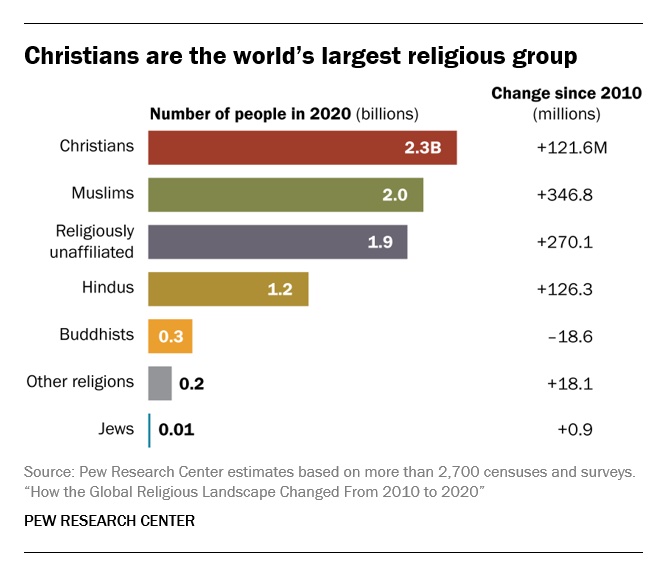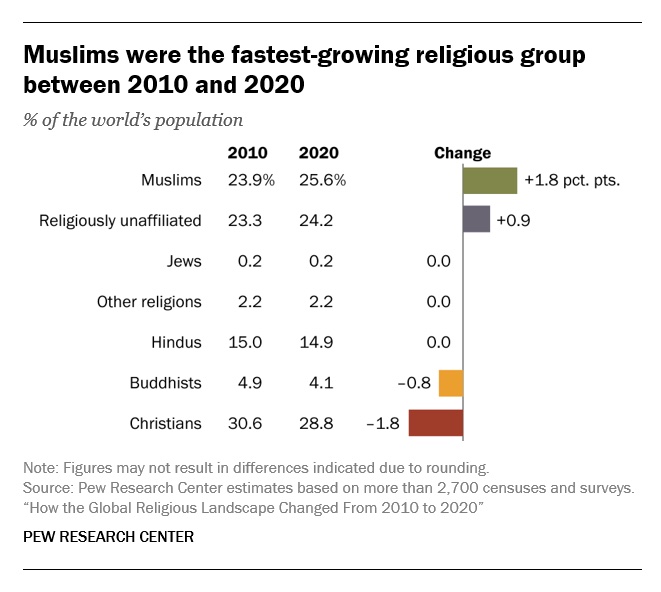Uncategorized
Synagogues are joining the ‘effective altruism’ movement. Will the Sam Bankman-Fried scandal stop them?
(JTA) — A few years ago, Adam Azari was frustrated over how little he could do to alleviate suffering in the world with his modest income as a writer and caretaker for people with disabilities.
He kept thinking about a set of statistics and ideas he had encountered during his graduate studies in philosophy. For example, he remembered reading that for the price of training a guide dog for the blind in the United States, one could prevent hundreds of cases of blindness in the developing world.
This hyper-rational way of thinking about doing good was called effective altruism, and it was growing into a movement, known as E.A. for short. Some proponents were even opting to pursue lucrative careers in finance and tech that they otherwise might not have chosen so they would have more money to give away.
Azari, meanwhile, had become a believer who was stuck on the sidelines. Then, one day, he had what he calls a “personal eureka moment.” Azari would return to his roots as the son of a Reform rabbi in Tel Aviv and spread the word of E.A. across the Jewish denomination and among its millions of followers.
“It suddenly hit me that the Reform movement has this crazy untapped potential to save thousands and thousands of lives by simply informing Jews about effective giving,” he recalled.
He badgered his father, Rabbi Meir Azari, and, for a moment, thought of becoming a rabbi himself. But he abandoned the idea and focused on pitching E.A. to the Reform movement’s international arm, the World Union for Progressive Judaism. Azari found an ally in WUPJ’s president, Rabbi Sergio Bergman, and the organization soon decided to sponsor his efforts, paying him a salary for his work.
Over the past year, Azari’s Jewish Effective Giving Initiative has presented to about 100 rabbis and secured pledges from 37 Reform congregations to donate at least $3,000 to charities rated as the most impactful by E.A. advocates and which aid poor people in the developing world. Per E.A. calculations, it costs $3,000 to $5,000 to save a single life.
“Progressive Judaism inspires us to carry out tikkun olam, our concrete action to make the world better and repair its injustices,” Bergman said. “With this call we not only do what the heart dictates in values, but also do it effectively to be efficient and responsible for saving a life.”
This charitable philosophy appears to be gaining traction in the Jewish world just as one of the figures most associated with it, who happens to be Jewish, has become engulfed in scandal.
Sam Bankman-Fried built a cryptocurrency empire worth billions, amassing a fortune he pledged to give away to causes such as artificial intelligence, combatting biohazards and climate change, all selected on criteria developed by the proponents of effective altruism.
A few weeks ago, Bankman-Fried’s fortune evaporated amid suspicions of financial misconduct and revelations of improper oversight at his company, FTX, a cryptocurrency exchange that was worth as much as $32 billion before a run of withdrawals ultimately left it illiquid. The situation has drawn comparisons to the implosion of Bernie Madoff’s Ponzi scheme, and authorities investigating the situation have said Bankman-Fried could face criminal penalties over his role.
In the wake of FTX’s collapse, Bankman-Fried has suggested that his embrace of E.A. was insincere, a tactic to bolster his reputation.
But Azari and the organizer of another initiative, a growing reading and discussion group called Effective Altruism for Jews, are undaunted and don’t believe the scandal should taint the underlying principles of the movement.
“Whether you call it E.A. or just directly donating to global health and development, it doesn’t matter,” Azari said. “The basic idea is to support these wonderful charities, and I don’t think the FTX scandal changes any of that. Malaria nets, vitamin A supplements and vaccine distribution are still super cost-effective, evidence-based ways of helping others.”
Azari added that he has had several meetings with rabbis since the news about Bankman-Fried broke and that no one has asked him about it.
“I don’t think people are making the connection,” he said. “And to me, there is no connection between us and FTX.”
When talking to rabbis about why E.A. would make a good fit with their congregation’s charitable mission, Azari cites the Jewish value of tikkun olam, a mandate to “repair the world” often used to implore people to care for others. He explains that donating to charities with a proven track record is a concrete way to fulfill a Jewish responsibility.
That kind of thinking proved attractive to Steven Pinker, the prominent Harvard psychologist, who has endorsed Azari’s initiative. In a recorded discussion with Azari and others last year, Pinker recalled his Reform upbringing, which included Hebrew school, summer camp and synagogue services.
“The thing I remember most is how much of my so-called religious education was like a university course in moral philosophy,” Pinker said. “We chewed over moral dilemmas.”
As an adult, Pinker returned to Jewish teachings on charity and, in particular, those of the medieval philosopher Maimonides, examining these ideas through the lens of E.A. He began to wonder about the implications of Maimonides’ focus on evaluating charity based on the motives of the donor. That focus, he concluded, doesn’t always lead to the best outcomes for the beneficiary.
“What ultimately ought to count in tzedakah, in charity, is, are you making people better off?” he said.
Also on the panel with Azari and Pinker was the man credited with authoring the foundational texts upon which E.A. is built. Peter Singer, who is also Jewish and whose grandfather died in the Holocaust, teaches bioethics at Princeton. Starting in the 1970s, Singer wrote a series of books in which he argues for a utilitarian approach to ethics, namely, that we should forgo luxuries and spend our money to save lives. The extremes to which he has taken his thinking include suggesting that parents of newborn babies with severe disabilities be permitted to kill them.
From Bankman-Fried to Singer, the list of Jews who have either promoted E.A. or lead its institutions is long. With their estimated fortune of $11.3 billion, Facebook co-founder Dustin Moskovitz and his wife Cari Tuna have eclipsed Bankman-Fried as the wealthiest Jews in the field. There’s also popular philosopher Sam Harris and New York Times columnist Ezra Klein, who have each dedicated episodes of their podcast to the topic.
The website LessWrong, which defines itself as “a community blog devoted to refining the art of rationality,” is seen as an important early influence; it was founded by Eliezer Yudkowsky, an artificial intelligence researcher who grew up in a Modern Orthodox household but does not identify religiously as a Jew anymore. Two other Jews, Holden Karnofsky and Elie Hassenfeld, left the hedge fund world to establish GiveWell, a group whose research is considered the premier authority on which charities are deserving of E.A. donations.
The prevalence of Jews in the movement caught the attention of E.A. enthusiast Ben Schifman, an environmental lawyer for the federal government in Washington, D.C. About two years ago, Schifman proposed creating a group for like-minded individuals in hope of helping grow the movement. In an online post, he laid out the history of Jewish involvement and wrote a brief introduction to the topic of Judaism and charity.
Today, Schifmam runs a group called Effective Altruism for Jews, whose main program is an eight-week fellowship involving a reading and discussion group with designated facilitators. Schifman said about 70 people spread across 10 cohorts are currently participating. There’s also a Shabbat dinner program to bring people together for informal meetings with funding available for hosts.
Participants discuss how ideas that are popular in E.A. might relate to Jewish traditions and concepts, and also brainstorm ways to popularize the movement in the wider Jewish community, according to Schifman.
“There’s a lot of low-hanging fruit with regards to the Jewish community and sharing some of the ideas of Effective Altruism, like through giving circles at synagogues or, during the holidays, offering charities that are effective,” Schifman said in an interview that took place before the Bankman-Fried scandal broke.
Asked to discuss the mood in the community following the collapse of Bankman-Fried’s company and an affiliated charity, FTX Future Fund, Schifman provided a brief statement expressing continued confidence in his project.
He said, “While we’re shocked by the news and our hearts go out to all those affected, as an organization EA for Jews isn’t funded by FTX Future Fund or otherwise connected to FTX. We don’t expect our work will be impacted.”
Even if Schifman and Azari are right that their movement is robust enough to withstand the downfall of a leading evangelist, a debate remains about what impact E.A. can or should have on philanthropy itself.
Andres Spokoiny, president and CEO of the Jewish Funders Network, wrote about the question with skepticism in an article published more than two years ago. He argued against “uncritically importing the values and assumptions” of effective altruists, whose emphasis on the “cold light of reason” struck him as detached from human nature.
In a recent interview, Spokoiny echoed similar concerns, noting that applying pure rationality to all charitable giving would mean the end of cherished programs such as PJ Library, which supplies children’s books for free to Jewish families, that may not directly save lives but do contribute to a community’s culture and sense of identity.
He also worries that too strong a focus on evidence of impact would steer money away from new ideas.
“Risky, creative ideas don’t tend to emerge from rational needs assessments,” he said. “It requires a transformative vision that goes beyond that.”
But Spokoiny also sounded more open to E.A. and said that as long as it does not try to replace traditional modes of philanthropy, it could be a useful tool of analysis for donors.
“If donors want to apply some of E.A. principles to their work, I’d say that is a good idea,” he said. “I am still waiting to see if this will be a fad or buzzword or something that will be incorporated into the practice of philanthropy.”
—
The post Synagogues are joining the ‘effective altruism’ movement. Will the Sam Bankman-Fried scandal stop them? appeared first on Jewish Telegraphic Agency.
Uncategorized
How the Global Religious Landscape Changed from 2010 to 2020

Muslims grew fastest; Christians lagged behind global population increase
• Christians are the world’s largest religious group, at 28.8% of the global population. They are a majority everywhere except the Asia-Pacific and Middle East-North Africa regions. Sub-Saharan Africa has surpassed Europe in having the largest number of Christians. But Christians are shrinking as a share of the global population, as millions of Christians “switch” out of religion to become religiously unaffiliated.

• Muslims are the world’s second-largest religious group (25.6% of the world’s population) and the fastest-growing major religion, largely due to Muslims’ relatively young age structure and high fertility rate. They make up the vast majority of the population in the Middle East-North Africa region. In all other regions, Muslims are a religious minority, including in the Asia-Pacific region (which is home to the greatest number of Muslims).

• The religiously unaffiliated population is the world’s third-largest religious category (24.2% of the global population), after Christians and Muslims. Between 2010 and 2020, religiously unaffiliated people grew more than any group except Muslims, despite their demographic disadvantages of an older age structure and relatively low fertility. The unaffiliated made up a majority of the population in 10 countries and territories in 2020, up from seven a decade earlier.
• Hindus are the fourth-largest religious category (14.9% of the world’s population), after Christians, Muslims and religiously unaffiliated people. Most (99%) live in the Asia-Pacific region; 95% of all Hindus live in India alone. Between 2010 and 2020, Hindus remained a stable share of the world’s population because their fertility resembles the global average, and surveys indicate that switching out of or into Hinduism is rare.
• Buddhists (4.1% of the world’s population) are the only group in this report whose number declined worldwide between 2010 and 2020. This was due both to religious disaffiliation among Buddhists in East Asia and to a relatively low birth rate among Buddhists, who tend to live in countries with older populations. Most of the world’s Buddhists (98%) reside in the Asia-Pacific region, the birthplace of Buddhism.
• Jews, the smallest religious group analyzed separately in this report (0.2% of the world’s population), lagged behind global population growth between 2010 and 2020 – despite having fertility rates on par with the global average – due to their older age structure. Most Jews live either in North America (primarily in the United States) or in the Middle East-North Africa region (almost exclusively in Israel).
These are among the key findings of a Pew Research Center analysis of more than 2,700 censuses and surveys, including census data releases that were delayed due to the coronavirus pandemic. This report is part of the Pew-Templeton Global Religious Futures project, which analyzes global religious change and its impact on societies around the world. Funding for the Global Religious Futures project comes from The Pew Charitable Trusts and the John Templeton Foundation.
Uncategorized
Antisemitism in some unlikely places in America

By HENRY SREBRNIK Antisemitism flourishes in a place where few might expect to confront it – medical schools and among doctors. It affects Jews, I think, more emotionally than Judeophobia in other fields.
Medicine has long been a Jewish profession with a history going back centuries. We all know the jokes about “my son – now also my daughter – the doctor.” Physicians take the Hippocratic Oath to heal the sick, regardless of their ethnicity or religion. When we are ill doctors often become the people who save us from debilitating illness and even death. So this is all the more shocking.
Yes, in earlier periods there were medical schools with quotas and hospitals who refused or limited the number of Jews they allowed to be affiliated with them. It’s why we built Jewish hospitals and practices. And of course, we all shudder at the history of Nazi doctors and euthanasia in Germany and in the concentration camps of Europe. But all this – so we thought – was a thing of a dark past. Yet now it has made a comeback, along with many other horrors we assume might never reappear.
Since the Hamas attack on Israel on October 7, 2023, there has been a resurgence of antisemitism, also noticeable in the world of healthcare. This is not just a Canadian issue. Two articles on the Jewish website Tablet, published Nov. 21, 2023, and May 18, 2025, spoke to this problem in American medicine as well, referencing a study by Ian Kingsbury and Jay P. Greene of Do No Harm, a health care advocacy group, based on data amassed by the organization Stop Antisemitism. They identified a wave of open Jew-hatred by medical professionals, medical schools, and professional associations, often driven by foreign-trained doctors importing the Jew-hatred of their native countries, suggesting “that a field entrusted with healing is becoming a licensed purveyor of hatred.”
Activists from Doctors Against Genocide, American Palestinian Women’s Association, and CODEPINK held a demonstration calling for an immediate cease-fire in Gaza at the Hart Senate Office Building in Washington, D.C., Nov. 16, 2023, almost as soon as the war began. A doctor in Tampa took to social media to post a Palestinian flag with the caption “about time!!!” The medical director of a cancer centre in Dearborn, Michigan, posted on social media: “What a beautiful morning. What a beautiful day.” Even in New York, a physician commented on Instagram that “Zionist settlers” got “a taste of their own medicine.” A Boston-based dentist was filmed ripping down posters of Israeli victims and a professor at the University of Pennsylvania Perelman School of Medicine did the same. Almost three-quarters of American medical associations felt the need to speak out on the war in Ukraine but almost three-quarters had nothing to say about the war in Israel.
Antisemitism in academic medical centres is fostering noxious environments which deprive Jewish healthcare professionals of their civil right to work in spaces free from discrimination and hate, according to a study by the Data & Analytics Department of StandWithUs, an international, non-partisan education organization that supports Israel and fights antisemitism.
“Academia today is increasingly cultivating an environment which is hostile to Jews, as well as members of other religious and ethnic groups,” StandWithUs director of data and analytics, and study co-author, Alexandra Fishman, said on May 5 in a press release. “Academic institutions should be upholding the integrity of scholarship, prioritizing civil discourse, rather than allowing bias or personal agendas to guide academic culture.”
The study, “Antisemitism in American Healthcare: The Role of Workplace Environment,” included survey data showing that 62.8 per cent of Jewish healthcare professionals employed by campus-based medical centres reported experiencing antisemitism, a far higher rate than those working in private practice and community hospitals. Fueling the rise in hate, it added, were repeated failures of DEI (diversity, equity, and inclusion) initiatives to educate workers about antisemitism, increasing, the report said, the likelihood of antisemitic activity.
“When administrators and colleagues understand what antisemitism looks like, it clearly correlates with less antisemitism in the workplace,” co-author and Yeshiva University professor Dr. Charles Auerbach reported. “Recognition is a powerful tool — institutions that foster awareness create safer, more inclusive environments for everyone.”
Last December, the Data & Analytics Department also published a study which found that nearly 40 per cent of Jewish American health-care professionals have encountered antisemitism in the workplace, either as witnesses or victims. The study included a survey of 645 Jewish health workers, a substantial number of whom said they were subject to “social and professional isolation.” The problem left more than one quarter of the survey cohort, 26.4 per cent, “feeling unsafe or threatened.”
The official journal of the Alliance for Academic Internal Medicine concurs. According to “The Moral Imperative of Countering Antisemitism in US Medicine – A Way Forward,” by Hedy S. Wald and Steven Roth, published in the October 2024 issue of the American Journal of Medicine, increased antisemitism in the United States has created a hostile learning and practice environment in medical settings. This includes instances of antisemitic behaviour and the use of antisemitic symbols at medical school commencements.
Examples of its impact upon medicine include medical students’ social media postings claiming that Jews wield disproportionate power, antisemitic slogans at the University of California, Los Angeles (UCLA) David Geffen School of Medicine, antisemitic graffiti at the University of California, San Francisco (UCSF) Cancer Centre, Jewish medical students’ exposure to demonization of Israel diatribes and rationalizing terrorism; and faculty, including a professor of medicine at UCSF, posting antisemitic tropes and derogatory comments about Jewish health care professionals. Jewish medical students’ fears of retribution, should they speak out, have been reported. “Our recent unpublished survey of Jewish physicians and trainees demonstrated a twofold increase from 40% to 88% for those who experienced antisemitism prior to vs after October 7,” they stated.
In some schools, Jewish faculty are speaking out. In February, the Jewish Faculty Resilience Group at UCLA accused the institution in an open letter of “ignoring” antisemitism at the School of Medicine, charging that its indifference to the matter “continues to encourage more antisemitism.” It added that discrimination at the medical school has caused demonstrable harm to Jewish students and faculty. Student clubs, it said, are denied recognition for arbitrary reasons; Jewish faculty whose ethnic backgrounds were previously unknown are purged from the payrolls upon being identified as Jews; and anyone who refuses to participate in anti-Zionist events is “intimidated” and pressured.
Given these findings, many American physicians are worried not only as Jewish doctors and professionals, but for Jewish patients who are more than ever concerned with whom they’re meeting. Can we really conceive of a future where you’re not sure if “the doctor will hate you now?”
Henry Srebrnik is a professor of political science at the University of Prince Edward Island.
Uncategorized
The 2025 Toronto Walk (and talk ) for Israel

By GERRY POSNER There are walks and then there are walks. The Toronto UJA Walk for Israel on May 25, 2025 was one of a kind, at least as far as Canada and Jews are concerned. The number of people present was estimated to be 56,000 people or 112,000 total shoes. (How they get to that number is bewildering to me, since there is no one counting). This was 6,000 more than last year. Whether it is true or not, take it from me, it was packed. The synagogues in Canada should be so fortunate to get those numbers in total on High Holidays. The picture here gives you a sense of the size of the crowd.

This was my first walk in Toronto for Israel and I was with my granddaughter, Samantha Pyzer (not to forget her two friends whom she managed to meet at the site, no small feat, even with iPhones as aids). The official proceedings began at 9:00 a.m. and the walk at 10:00 a.m. There was entertainment to begin with, also along the way, and at the finish as well. The finish line this year was the Prosserman Centre or the JCC as it often called. The walk itself was perhaps 4 kilometres – not very long, but the walking was slow, especially at the beginning. There were lots of strollers, even baby carriages, though I did not see any wheelchairs. All ages participated on this walk. I figured, based on what I could see on the faces of people all around me that, although I was not the oldest one on the walk, I bet I made the top 100 – more likely the top 20.
What was a highlight for me was the number of Winnipeggers I met, both past and present. Connecting with them seemed to be much like a fluke. No doubt, I missed la lot of them, but I saw, in no particular order (I could not recall the order if my life depended on it): Alta Sigesmund, (who was, a long time ago, my daughter Amira’s teacher), Marni Samphir, Karla Berbrayer and her husband Dr. Allan Kraut and family. Then, when Samantha and I made it to the end and sat down to eat, I struck up a conversation with a woman unknown to me and as we chatted, she confirmed her former Winnipeg status as a sister-in- law to David Devere, as in Betty Shwemer, the sister of Cecile Devere. I also chanced upon Terri Cherniack, only because I paused for a moment and she spotted me. As we closed in near the finish, I met ( hey were on their way back), Earl and Suzanne Golden and son Matthew, as well as Daniel Glazerman. That stop caused me to lose my granddaughter and her pals. Try finding them amid the noise and size of the crowd – but I pulled it off.

As I was in line to get food, I started chatting with a guy in the vicinity of my age. I dropped the Winnipeg link and the floodgates opened with “ Did I know Jack and Joanie Rusen?” So that was an interesting few minutes. And I was not too terribly surprised to come across some of my Pickleball family. All of these meetings, along with spotting some of my sister’s family and other cousins, were carried on with the sound of the shofar as we moved along the way. In short, this was a happening. Merchants selling a variety of products, many of them Israeli based, were in evidence and, of course, the day could not have ended without the laying of tefillin, aided by Chabad, who have perfected the procedure to take less than a minute. See the photo. Chabad had a willing audience.
Aside from the joy of sharing this experience with my granddaughter, the very presence of all these Jews gathered together for a common reason made this day very special to me. However, there was a downside to the day. The downside was that, as we began to walk back to our car there was no other way I could figure out how to return when the rains came and came. While we walked faster, we were impeded by pouring rain and puddles. But Samantha wanted to persevere, as did I. We made it, but were drenched. My runners are still drying out as I write this two days later.
What with being surrounded by 56,000 people, the noise, the slow walking, and the rain, I can still say the day was a real highlight for me – one of the better moments since our arrival in Toronto in 2012. As well as the photos we took along the way, I have the reminder of the day, courtesy of the UJA, as evidenced from the photo. It was not just the walk, but the talk that accompanied the walk that made it so worthwhile for me. I would do it again, minus the rain.
